Jing Fan
RLHGNN: Reinforcement Learning-driven Heterogeneous Graph Neural Network for Next Activity Prediction in Business Processes
Jul 03, 2025Abstract:Next activity prediction represents a fundamental challenge for optimizing business processes in service-oriented architectures such as microservices environments, distributed enterprise systems, and cloud-native platforms, which enables proactive resource allocation and dynamic service composition. Despite the prevalence of sequence-based methods, these approaches fail to capture non-sequential relationships that arise from parallel executions and conditional dependencies. Even though graph-based approaches address structural preservation, they suffer from homogeneous representations and static structures that apply uniform modeling strategies regardless of individual process complexity characteristics. To address these limitations, we introduce RLHGNN, a novel framework that transforms event logs into heterogeneous process graphs with three distinct edge types grounded in established process mining theory. Our approach creates four flexible graph structures by selectively combining these edges to accommodate different process complexities, and employs reinforcement learning formulated as a Markov Decision Process to automatically determine the optimal graph structure for each specific process instance. RLHGNN then applies heterogeneous graph convolution with relation-specific aggregation strategies to effectively predict the next activity. This adaptive methodology enables precise modeling of both sequential and non-sequential relationships in service interactions. Comprehensive evaluation on six real-world datasets demonstrates that RLHGNN consistently outperforms state-of-the-art approaches. Furthermore, it maintains an inference latency of approximately 1 ms per prediction, representing a highly practical solution suitable for real-time business process monitoring applications. The source code is available at https://github.com/Joker3993/RLHGNN.
CLGNN: A Contrastive Learning-based GNN Model for Betweenness Centrality Prediction on Temporal Graphs
Jun 17, 2025Abstract:Temporal Betweenness Centrality (TBC) measures how often a node appears on optimal temporal paths, reflecting its importance in temporal networks. However, exact computation is highly expensive, and real-world TBC distributions are extremely imbalanced. The severe imbalance leads learning-based models to overfit to zero-centrality nodes, resulting in inaccurate TBC predictions and failure to identify truly central nodes. Existing graph neural network (GNN) methods either fail to handle such imbalance or ignore temporal dependencies altogether. To address these issues, we propose a scalable and inductive contrastive learning-based GNN (CLGNN) for accurate and efficient TBC prediction. CLGNN builds an instance graph to preserve path validity and temporal order, then encodes structural and temporal features using dual aggregation, i.e., mean and edge-to-node multi-head attention mechanisms, enhanced by temporal path count and time encodings. A stability-based clustering-guided contrastive module (KContrastNet) is introduced to separate high-, median-, and low-centrality nodes in representation space, mitigating class imbalance, while a regression module (ValueNet) estimates TBC values. CLGNN also supports multiple optimal path definitions to accommodate diverse temporal semantics. Extensive experiments demonstrate the effectiveness and efficiency of CLGNN across diverse benchmarks. CLGNN achieves up to a 663.7~$\times$ speedup compared to state-of-the-art exact TBC computation methods. It outperforms leading static GNN baselines with up to 31.4~$\times$ lower MAE and 16.7~$\times$ higher Spearman correlation, and surpasses state-of-the-art temporal GNNs with up to 5.7~$\times$ lower MAE and 3.9~$\times$ higher Spearman correlation.
Business as Rulesual: A Benchmark and Framework for Business Rule Flow Modeling with LLMs
May 29, 2025Abstract:Process mining aims to discover, monitor and optimize the actual behaviors of real processes. While prior work has mainly focused on extracting procedural action flows from instructional texts, rule flows embedded in business documents remain underexplored. To this end, we introduce a novel annotated Chinese dataset, BPRF, which contains 50 business process documents with 326 explicitly labeled business rules across multiple domains. Each rule is represented as a <Condition, Action> pair, and we annotate logical dependencies between rules (sequential, conditional, or parallel). We also propose ExIde, a framework for automatic business rule extraction and dependency relationship identification using large language models (LLMs). We evaluate ExIde using 12 state-of-the-art (SOTA) LLMs on the BPRF dataset, benchmarking performance on both rule extraction and dependency classification tasks of current LLMs. Our results demonstrate the effectiveness of ExIde in extracting structured business rules and analyzing their interdependencies for current SOTA LLMs, paving the way for more automated and interpretable business process automation.
Business as \textit{Rule}sual: A Benchmark and Framework for Business Rule Flow Modeling with LLMs
May 24, 2025Abstract:Process mining aims to discover, monitor and optimize the actual behaviors of real processes. While prior work has mainly focused on extracting procedural action flows from instructional texts, rule flows embedded in business documents remain underexplored. To this end, we introduce a novel annotated Chinese dataset, \textbf{BPRF}, which contains 50 business process documents with 326 explicitly labeled business rules across multiple domains. Each rule is represented as a <Condition, Action> pair, and we annotate logical dependencies between rules (sequential, conditional, or parallel). We also propose \textbf{ExIde}, a framework for automatic business rule extraction and dependency relationship identification using large language models (LLMs). We evaluate ExIde using 12 state-of-the-art (SOTA) LLMs on the BPRF dataset, benchmarking performance on both rule extraction and dependency classification tasks of current LLMs. Our results demonstrate the effectiveness of ExIde in extracting structured business rules and analyzing their interdependencies for current SOTA LLMs, paving the way for more automated and interpretable business process automation.
Adaptive Gradient Learning for Spiking Neural Networks by Exploiting Membrane Potential Dynamics
May 17, 2025Abstract:Brain-inspired spiking neural networks (SNNs) are recognized as a promising avenue for achieving efficient, low-energy neuromorphic computing. Recent advancements have focused on directly training high-performance SNNs by estimating the approximate gradients of spiking activity through a continuous function with constant sharpness, known as surrogate gradient (SG) learning. However, as spikes propagate among neurons, the distribution of membrane potential dynamics (MPD) will deviate from the gradient-available interval of fixed SG, hindering SNNs from searching the optimal solution space. To maintain the stability of gradient flows, SG needs to align with evolving MPD. Here, we propose adaptive gradient learning for SNNs by exploiting MPD, namely MPD-AGL. It fully accounts for the underlying factors contributing to membrane potential shifts and establishes a dynamic association between SG and MPD at different timesteps to relax gradient estimation, which provides a new degree of freedom for SG learning. Experimental results demonstrate that our method achieves excellent performance at low latency. Moreover, it increases the proportion of neurons that fall into the gradient-available interval compared to fixed SG, effectively mitigating the gradient vanishing problem.
Humanity's Last Exam
Jan 24, 2025Abstract:Benchmarks are important tools for tracking the rapid advancements in large language model (LLM) capabilities. However, benchmarks are not keeping pace in difficulty: LLMs now achieve over 90\% accuracy on popular benchmarks like MMLU, limiting informed measurement of state-of-the-art LLM capabilities. In response, we introduce Humanity's Last Exam (HLE), a multi-modal benchmark at the frontier of human knowledge, designed to be the final closed-ended academic benchmark of its kind with broad subject coverage. HLE consists of 3,000 questions across dozens of subjects, including mathematics, humanities, and the natural sciences. HLE is developed globally by subject-matter experts and consists of multiple-choice and short-answer questions suitable for automated grading. Each question has a known solution that is unambiguous and easily verifiable, but cannot be quickly answered via internet retrieval. State-of-the-art LLMs demonstrate low accuracy and calibration on HLE, highlighting a significant gap between current LLM capabilities and the expert human frontier on closed-ended academic questions. To inform research and policymaking upon a clear understanding of model capabilities, we publicly release HLE at https://lastexam.ai.
Evaluating Factual Consistency of Texts with Semantic Role Labeling
May 22, 2023Abstract:Automated evaluation of text generation systems has recently seen increasing attention, particularly checking whether generated text stays truthful to input sources. Existing methods frequently rely on an evaluation using task-specific language models, which in turn allows for little interpretability of generated scores. We introduce SRLScore, a reference-free evaluation metric designed with text summarization in mind. Our approach generates fact tuples constructed from Semantic Role Labels, applied to both input and summary texts. A final factuality score is computed by an adjustable scoring mechanism, which allows for easy adaption of the method across domains. Correlation with human judgments on English summarization datasets shows that SRLScore is competitive with state-of-the-art methods and exhibits stable generalization across datasets without requiring further training or hyperparameter tuning. We experiment with an optional co-reference resolution step, but find that the performance boost is mostly outweighed by the additional compute required. Our metric is available online at https://github.com/heyjing/SRLScore.
On the State of German Text Summarization
Jan 17, 2023Abstract:With recent advancements in the area of Natural Language Processing, the focus is slowly shifting from a purely English-centric view towards more language-specific solutions, including German. Especially practical for businesses to analyze their growing amount of textual data are text summarization systems, which transform long input documents into compressed and more digestible summary texts. In this work, we assess the particular landscape of German abstractive text summarization and investigate the reasons why practically useful solutions for abstractive text summarization are still absent in industry. Our focus is two-fold, analyzing a) training resources, and b) publicly available summarization systems. We are able to show that popular existing datasets exhibit crucial flaws in their assumptions about the original sources, which frequently leads to detrimental effects on system generalization and evaluation biases. We confirm that for the most popular training dataset, MLSUM, over 50% of the training set is unsuitable for abstractive summarization purposes. Furthermore, available systems frequently fail to compare to simple baselines, and ignore more effective and efficient extractive summarization approaches. We attribute poor evaluation quality to a variety of different factors, which are investigated in more detail in this work: A lack of qualitative (and diverse) gold data considered for training, understudied (and untreated) positional biases in some of the existing datasets, and the lack of easily accessible and streamlined pre-processing strategies or analysis tools. We provide a comprehensive assessment of available models on the cleaned datasets, and find that this can lead to a reduction of more than 20 ROUGE-1 points during evaluation. The code for dataset filtering and reproducing results can be found online at https://github.com/dennlinger/summaries
IC-GVINS: A Robust, Real-time, INS-Centric GNSS-Visual-Inertial Navigation System for Wheeled Robot
Apr 11, 2022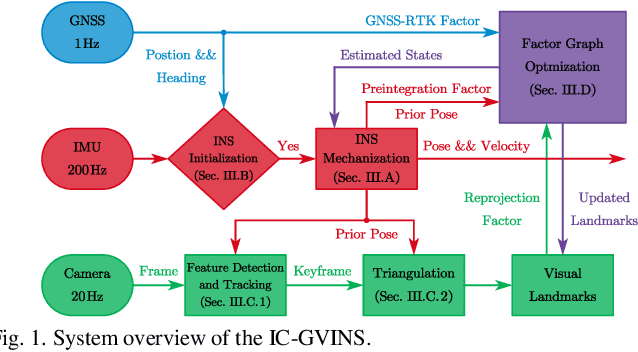
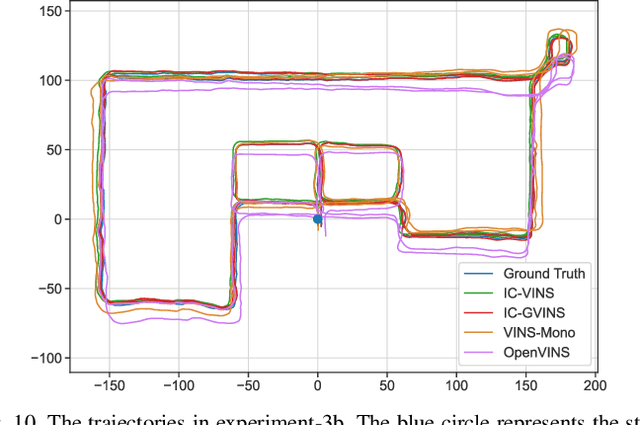
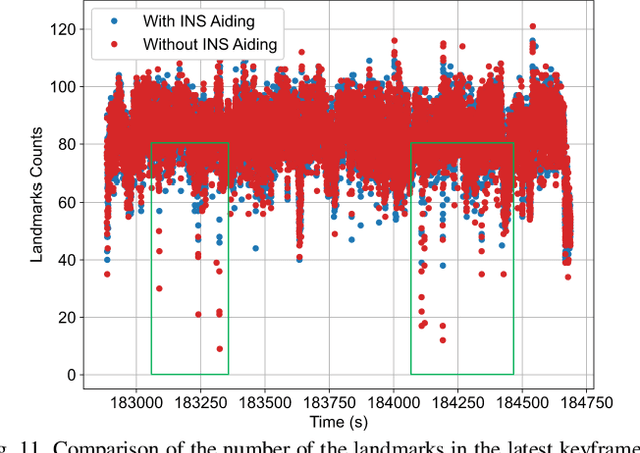
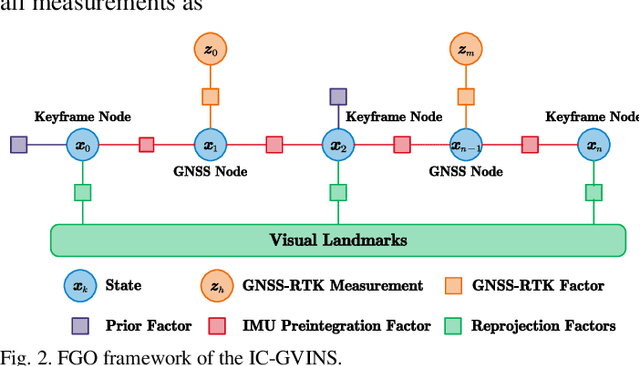
Abstract:In this letter, we present a robust, real-time, inertial navigation system (INS)-Centric GNSS-Visual-Inertial navigation system (IC-GVINS) for wheeled robot, in which the precise INS is fully utilized in both the state estimation and visual process. To improve the system robustness, the INS information is employed during the whole keyframe-based visual process, with strict outlier-culling strategy. GNSS is adopted to perform an accurate and convenient initialization of the IC-GVINS, and is further employed to achieve absolute positioning in large-scale environments. The IMU, visual, and GNSS measurements are tightly fused within the framework of factor graph optimization. Dedicated experiments were conducted to evaluate the robustness and accuracy of the IC-GVINS on a wheeled robot. The IC-GVINS demonstrates superior robustness in various visual-degenerated scenes with moving objects. Compared to the state-of-the-art visual-inertial navigation systems, the proposed method yields improved robustness and accuracy in various environments. We open source our codes combined with the dataset on GitHub
Finding the Winning Ticket of BERT for Binary Text Classification via Adaptive Layer Truncation before Fine-tuning
Nov 22, 2021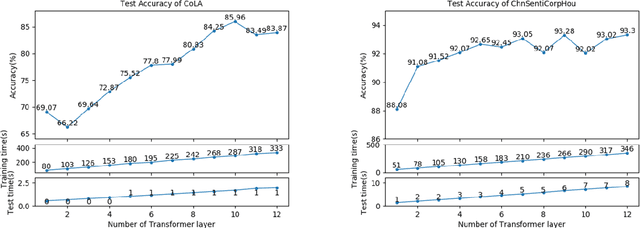

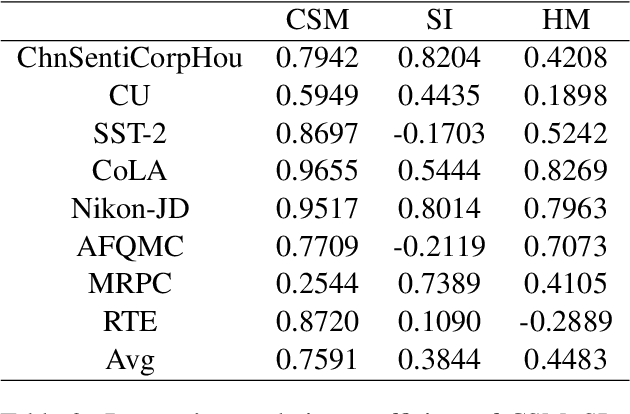

Abstract:In light of the success of transferring language models into NLP tasks, we ask whether the full BERT model is always the best and does it exist a simple but effective method to find the winning ticket in state-of-the-art deep neural networks without complex calculations. We construct a series of BERT-based models with different size and compare their predictions on 8 binary classification tasks. The results show there truly exist smaller sub-networks performing better than the full model. Then we present a further study and propose a simple method to shrink BERT appropriately before fine-tuning. Some extended experiments indicate that our method could save time and storage overhead extraordinarily with little even no accuracy loss.
 Add to Chrome
Add to Chrome Add to Firefox
Add to Firefox Add to Edge
Add to Edge